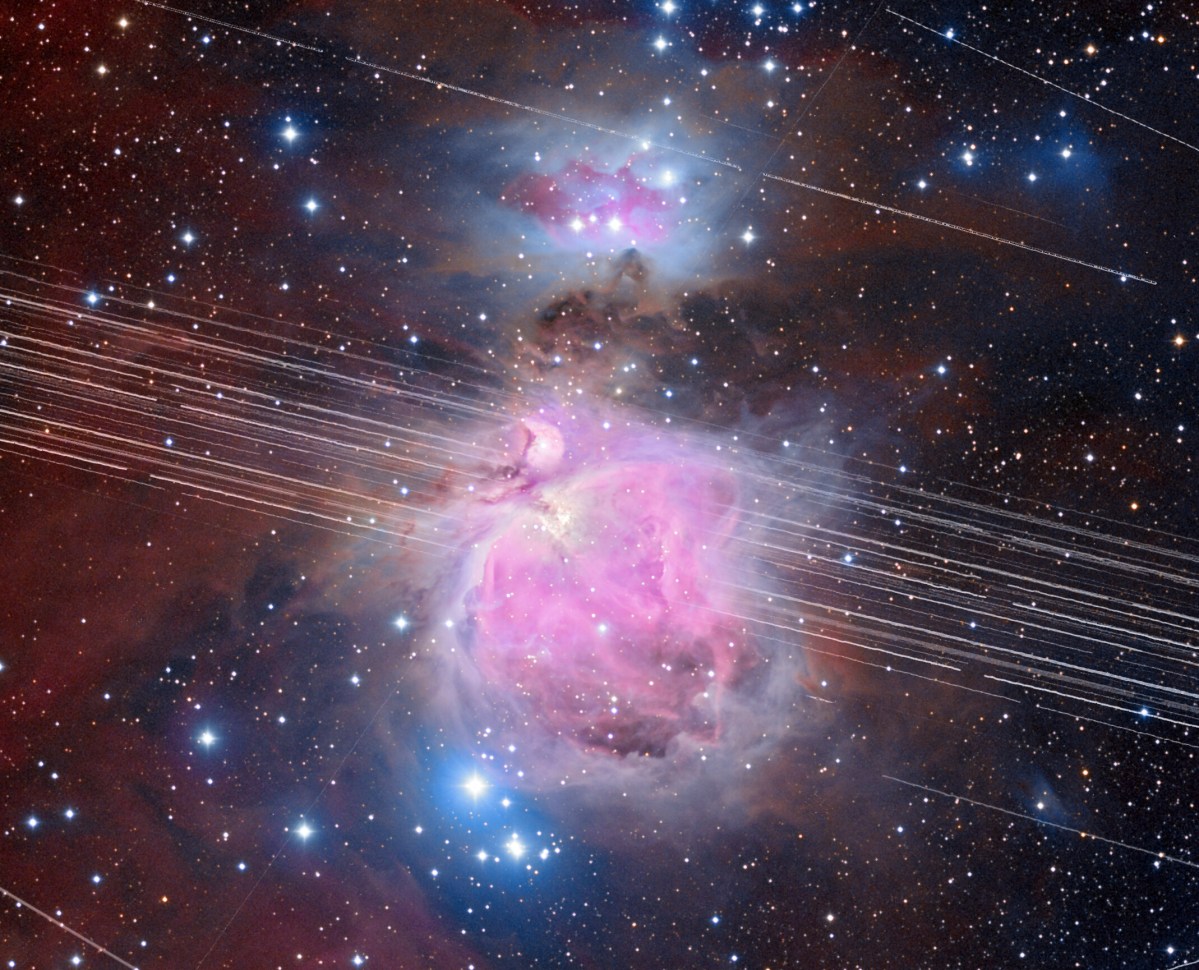WASHINGTON — Legislation introduced in the U.S. Senate would create a new center devoted to protecting astronomy from interference caused by satellite constellations even as existing efforts involving organizations and companies make progress.
The Dark and Quiet Skies Act of 2024, introduced Aug. 1 by Sens. John Hickenlooper (D-Colo.) and Mike Crapo (R-Idaho), would direct the National Institute of Standards and Technology (NIST) to create a “center of excellence” devoted to mitigating light and radio-frequency interference by satellites on astronomical observations.
“Light and radio pollution from satellites are keeping space’s mysteries beyond our reach,” Hickenlooper said in an Aug. 5 statement about the bill. “Preserving the darkness of the night sky will amplify our research.”
The center, overseen by NIST but run by an outside entity such as a nonprofit organization or university, would work with both astronomers and satellite operators to develop best practices to mitigate interference caused by satellites in optical and infrared wavelengths from reflected sunlight and radio wavelengths from the satellites’ transmissions.
The center would also conduct “transdisciplinary research, development, and demonstration projects” on ways to reduce satellite interference. The center would work with industry to disseminate voluntary guidelines but would not have any regulatory authority. The bill authorizes $20 million for the center for fiscal years 2025 through 2029.
If the bill is enacted, the center would join other initiatives established in the last five years to address concerns about interference large satellite constellations pose for astronomy. Astronomers sounded the alarm about that threat after the launch of the first SpaceX Starlink satellites in May 2019, which were visible to the naked eye in a “string of pearls” display in the days after launch. SpaceX has since launched more than 6,800 Starlink satellites, with thousands more planned by that company and other constellation developers.
One such effort is the International Astronomical Union’s Centre for the Protection of the Dark and Quiet Sky from Satellite Constellation Interference, or IAU CPS. That center is involved in several projects that include development of software tools for astronomers as well as public outreach and policy development.
The IAU announced Aug. 8 that CPS received a $750,000 grant from the U.S. National Science Foundation to support that work. The money will fund work on software to allow astronomers to predict what satellites will pass through the field of view of their observations, enabling them to work around the worst of the interference.
“This NSF funding will improve observatories’ ability to reduce the frequency of satellite passes affecting observations, therefore improving science outcomes,” said Connie Walker, co-director of the IAU CPS, in a statement about the grant.
The project will be particularly useful for the Vera C. Rubin Observatory in Chile, which is preparing to start a decade-long survey of the night sky that will discover objects ranging from near Earth asteroids to distant galaxies. Interference from satellites, particularly those bright enough to dazzle Rubin’s sensitive camera, have concerned astronomers.
“Rubin Observatory is about to begin a groundbreaking decade-long survey of the night sky, and it will see loads of streaks, glints and flares from artificial satellites,” said Meredith Rawls, an astronomer at the University of Washington who is the co-lead of the CPS “SatHub” project that will develop the software. “This funding will enable us to better understand and mitigate the resulting science impacts in Rubin data products.”
There is also cooperation directly between astronomers and satellite operators. SpaceX announced Aug. 9 that it worked with the NSF and National Radio Astronomy Observatory (NRAO) on a technique the company will implement with its Starlink satellites to avoid interference with NRAO’s radio observatories.
That technique, called telescope boresight avoidance, involves a “real-time data sharing framework” between Starlink and radio observatories so that SpaceX knows the pointing direction, or boresight, of the radio telescopes. The Starlink satellites then adjust their beam patterns as they pass overhead to avoid directing signals into the telescope.
“This boresight avoidance method protects the telescope’s observations while ensuring Starlink service remains uninterrupted for customers near the telescope,” SpaceX said. The system is active now for the NRAO’s Very Large Array radio observatory in New Mexico and the company said it is working with other radio telescopes to implement it.
“The innovative methods developed jointly by NSF NRAO and SpaceX provide a clear path that others can follow to increase rural access to high-speed internet while protecting the scientific and economic benefits produced by nearby radio astronomy facilities,” said Ashley VanderLey, senior advisor for facilities in the NSF Astronomical Sciences Division, in an NSF statement about the effort.
